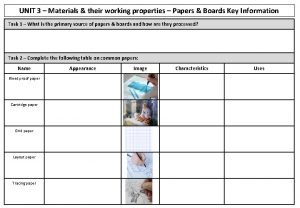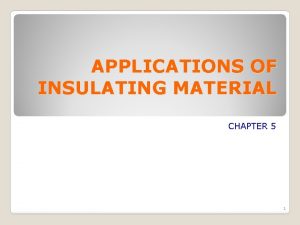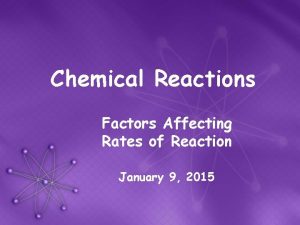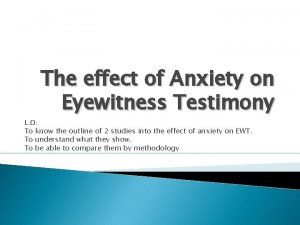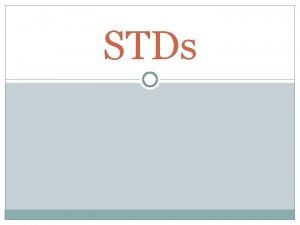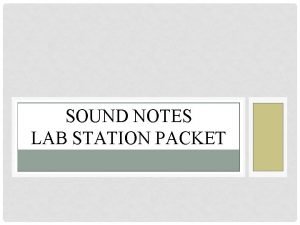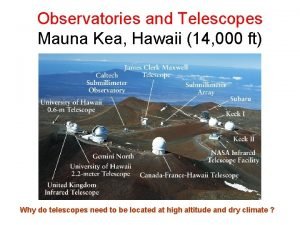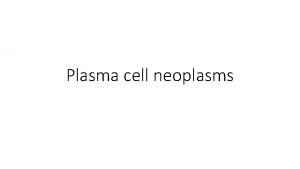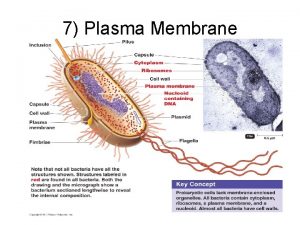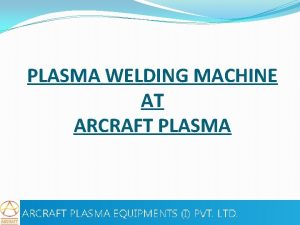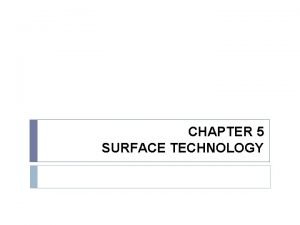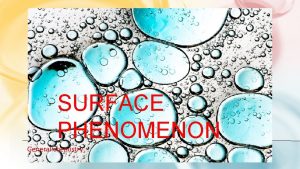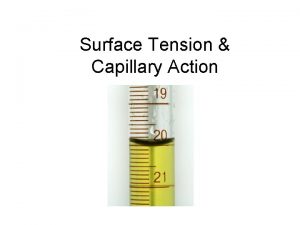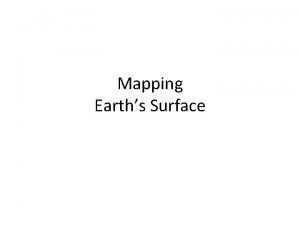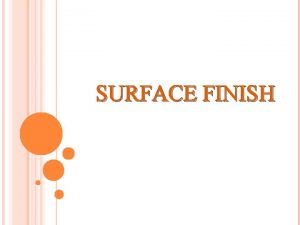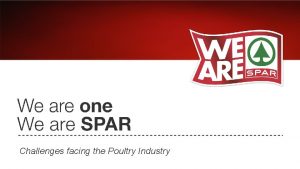Plasma facing surface materials and their affects on










![• Unrecognizable difference in electron density • Noticeable differences in [O] density at • Unrecognizable difference in electron density • Noticeable differences in [O] density at](https://slidetodoc.com/presentation_image_h/09dd29cc43edaca48eb66c9e18d07583/image-11.jpg)




















- Slides: 31

Plasma facing surface materials and their affects on LP pulsed plasma characteristics Joel Brandon, Dr. Steve Shannon

Summary •

Summary

Electron Sources • Secondary surface electrons – Photoelectric • Photons – Potential Ejection • Ions • Metastables – Kinetic Ejection • Fast Ions • Fast neutrals Dominant Assumed negligible • Ionizing collisions – Electron – neutral – Charge exchange – Penning Ionization – Associative detachment

Potential Ejection - Auger Emission Auger Neutralization Auger De-excitation • 2 possible pathways “Theory of Auger ejection of electrons by metals” Hagstrum 1954

2) Zaka-ul-Islam

• 5) Godyak 1992

3) Shibata et al

Hypothesis • Through material considerations in source design we can create a new knob for transient control and power efficiency of pulsed plasmas by manipulating electron sources.

![Unrecognizable difference in electron density Noticeable differences in O density at • Unrecognizable difference in electron density • Noticeable differences in [O] density at](https://slidetodoc.com/presentation_image_h/09dd29cc43edaca48eb66c9e18d07583/image-11.jpg)
• Unrecognizable difference in electron density • Noticeable differences in [O] density at electrode

Chamber Setup

Chamber setup

Review of experimental work

Exp Design • Feedthrough on vacuum chamber allows rotation, effectively changing surface material of grounded cathode in active plasma • No venting of chamber • 6” diameter • One whole face covered in copper tape while one side remains aluminum

Pulsing data for O 2 on Cu and Al surfaces • SS density has changed • Visible difference in rate of rise at the point of E-H transition • Upon just flipping from Al to Cu, pressure reading changed by 34 m. Torr • Possibly gas heating, dissociation, or ionization • Process was done with constant match settings • Readings on surfaces were alternated; Al, Cu, Al, Cu • Data taken with LP • 500 Hz, 200 W, 190 m. Torr

Smith Chart from surface to surface Z=48. 699 4 m Z=51. 026

E-H Transition E-H transition • Al Cu

Electrode setup Half wafer • Similar electrode setup to previous experiment • Surfaces are now thin film deposits • Surfaces tested – Magnesium – Aluminum – Copper – Silver`

50 m. T pulsed density

50 m. T EEDFs Evolution of EEDF from transient to SS High energy electrons play role in transient High energy electrons lose their role with the silver cathode

100 m. T

100 m. T EEDFs Still a similar evolution from 50 m. Torr but less difference between the 2 approaching SS

250 m. Torr data Less distinct temporal evolution as suggested by 50 → 100 m. Torr case Longer term pulse to pulse change for Ag

Early runs with silver thin film 50 m. Torr Al outlier was last run 100 m. Torr Al outlier was 3 rd of 5 runs Subsequent runs for material ~2 min apart

Mesh netting to eliminate edge light-up Degradation of silver coating after O 2 plasma exposure Degradation of copper film after O 2 plasma exposure

Future modifications to experiment

Optical parametric oscillator for O atom measurements • Laser output 410 -2500 nm (18. 5 k) or 192 -2750 nm (62. 7 k)

Future modifications • Expandable bellows for Langmuir probe insertion • Shrink chamber size • OES measurements for OH contamination • Re-oxidize surfaces when Al EEDF changes form • Compare machined Al surface with Al tape surface – Surface roughness

Review • Machined surface vs copper tape showed consistent changes in pulse profile as well as pressure change between the two surfaces • Differences in EEDF between surfaces stronger at low pressures • Visible difference in pulse density profile for recombination experiments • No visible difference in pulse profile for surface electron experiments • Silver degradation visible through first set of runs

References •
 Thinking affects our language which then affects our
Thinking affects our language which then affects our Why are materials useful
Why are materials useful Natural materials
Natural materials Man made map
Man made map Adopting materials
Adopting materials Classification of tools and equipment in carpentry
Classification of tools and equipment in carpentry Properties of foil lined board
Properties of foil lined board Applications of insulating materials in transformers ppt
Applications of insulating materials in transformers ppt Wet curved surface area
Wet curved surface area Lateral surface area of a prism
Lateral surface area of a prism Direct materials budget with multiple materials
Direct materials budget with multiple materials What is catalyst and how it affects reaction rate
What is catalyst and how it affects reaction rate Materials used to make taino houses
Materials used to make taino houses Erect position medical terminology
Erect position medical terminology Dorsum medical term
Dorsum medical term Political and legal environment facing business
Political and legal environment facing business High surface tension vs low surface tension
High surface tension vs low surface tension The tragedy of romeo and juliet prologue
The tragedy of romeo and juliet prologue What affects rate of weathering
What affects rate of weathering Waves means
Waves means New deal affects many groups
New deal affects many groups How anxiety affects eyewitness testimony
How anxiety affects eyewitness testimony A bacterial std that usually affects mucous membranes
A bacterial std that usually affects mucous membranes What factor affects the speed of sound wave?
What factor affects the speed of sound wave? The perception process
The perception process Chromatic aberration affects reflector telescopes.
Chromatic aberration affects reflector telescopes. How sport affects health
How sport affects health Enumerate the factors affecting trajectory
Enumerate the factors affecting trajectory Which poetry element affects the poem's sound
Which poetry element affects the poem's sound How culture affects decision making
How culture affects decision making How technology affects managerial communication
How technology affects managerial communication Chapter 1 lesson 2 what affects your health
Chapter 1 lesson 2 what affects your health






